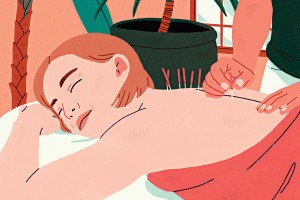Tips for Dealing with Four Common Phobias

iStockphoto
A preflight booze binge, a string of cancelled doctor’s appointments, habitual date rescheduling: We all have ways of dealing with our anxieties. But when an everyday fear becomes a phobia—one that keeps us from doing the things we need to do—it’s time to seek exposure therapy. For years, experts have helped patients overcome their worries by forcing them to confront anxiety triggers in controlled ways, says Jason Krompinger, a clinician at McLean Hospital’s Obsessive Compulsive Disorder Institute. At right, pro tips for dealing with four common frights.
Fear of: Flying (Aviophobia)
How to Cope: When you grip your seat (or your seatmate), you’re actually stoking your fear, says Todd Farchione, director of Boston University’s Intensive Treatment Program for Panic Disorder and Specific Phobias. Instead, he recommends modifying your body language to suggest that you’re relaxed. Believe it or not, your mind will take the hint.
Fear of: Needles and Injection (Trypanophobia)
How to Cope: Unlike most phobias, trypanophobia typically causes blood pressure to drop (instead of spike), which is why so many people faint when they see a needle, says Lauren Mednick, assistant director of outpatient psychiatry at Boston Children’s Hospital. To avoid passing out, Mednick recommends squeezing your muscles for five seconds, then releasing and repeating.
Fear of: Spiders (Arachnophobia)
How to Cope: Constant worrying about an arachnid encounter “teaches your brain that the spider is significant,” Krompinger says. Try training yourself to accept that, yes, spiders exist, and it probably won’t be a big deal when you run into one.
Fear of: Being in Public (Agoraphobia)
How to Cope: Fear of crowds, or being out in public, can be particularly debilitating. To treat this phobia, Krompinger uses a hierarchical approach: First patients are trained to walk out the door, then down the steps. Eventually, they are eased into life beyond their front yard.


